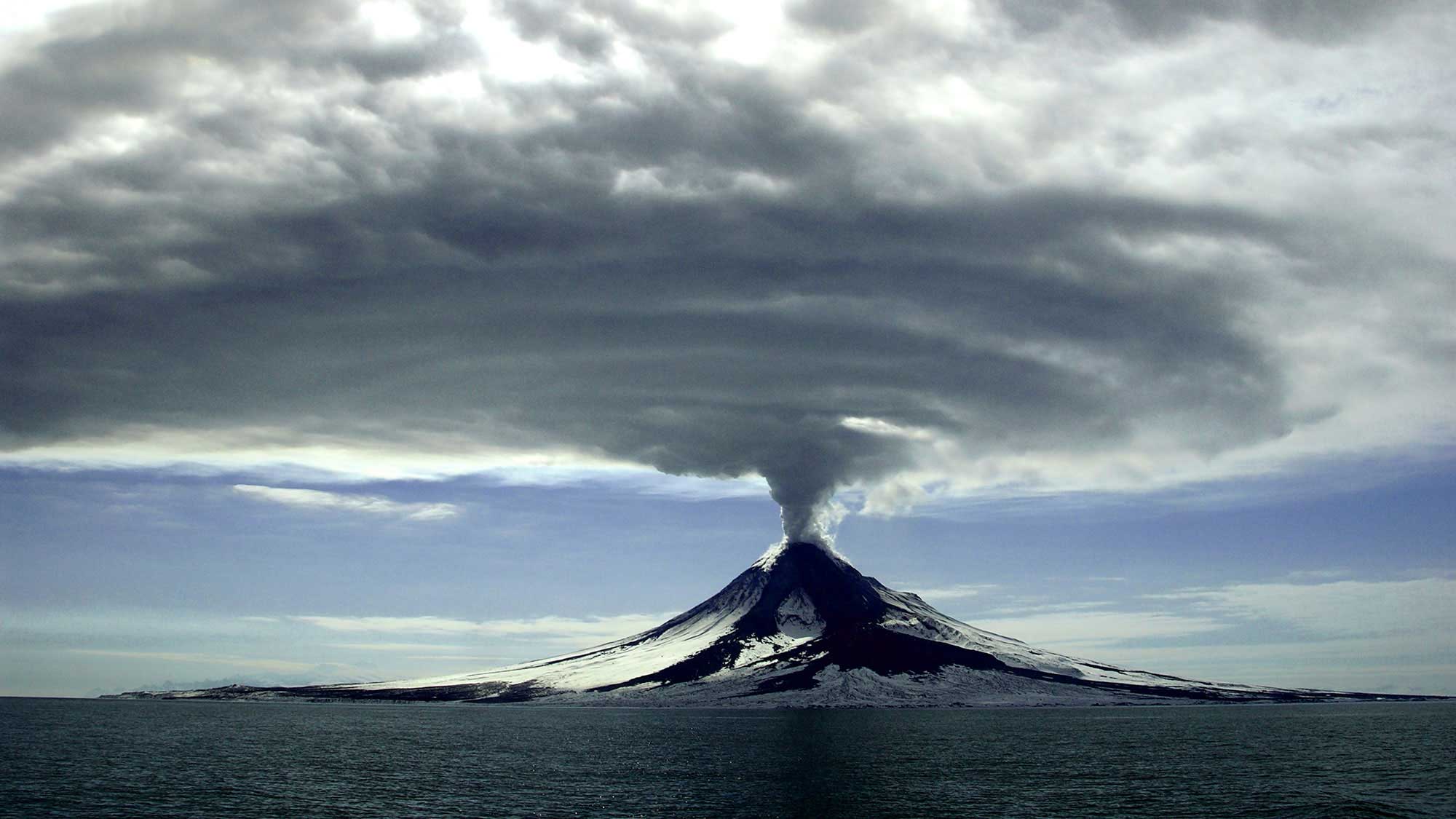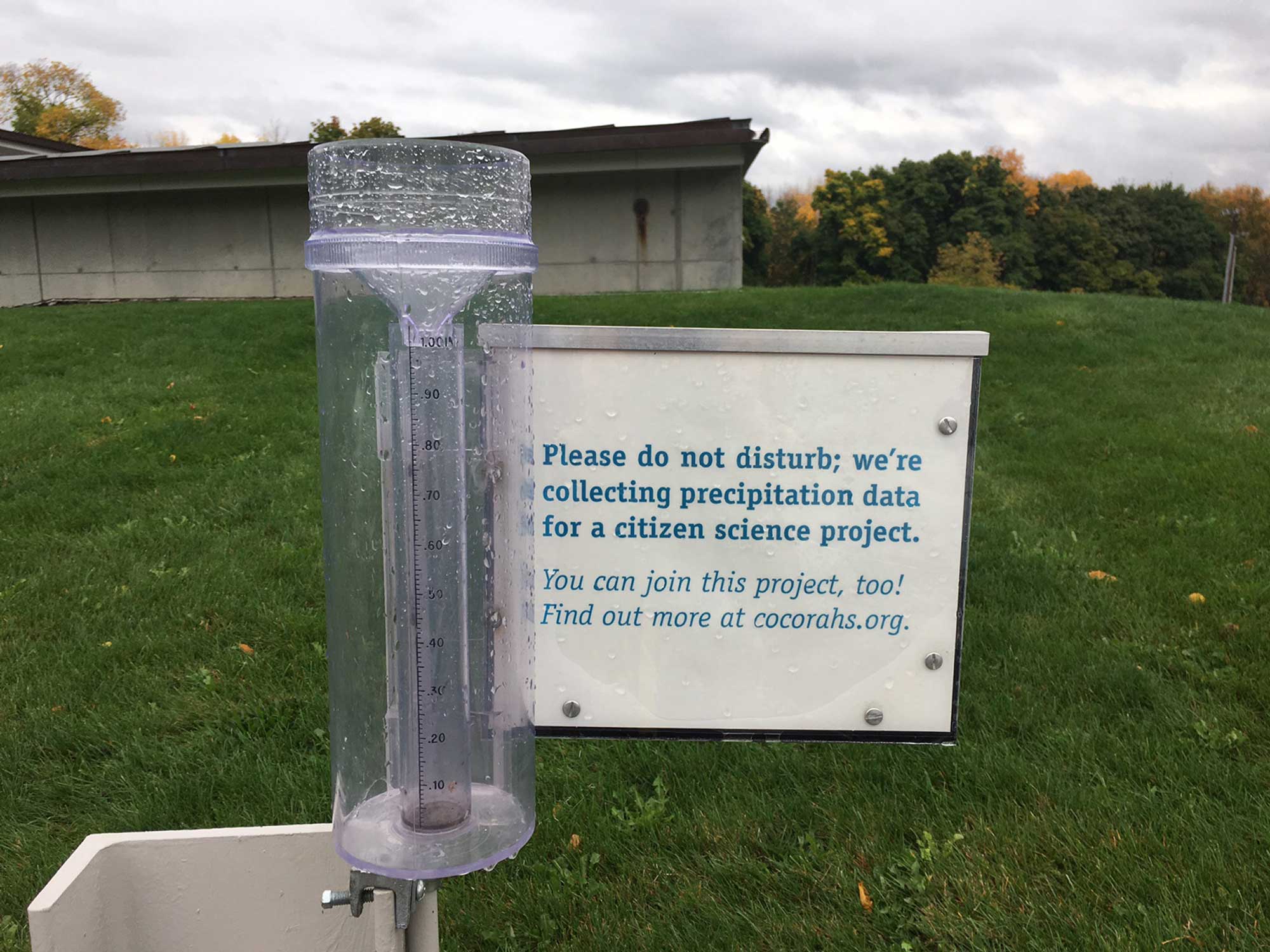Chapter Contents:
- Climate is a System
- Measuring Climate
- Greenhouse Gases and Global Temperature
- Natural Causes of Climate Change
- Summary and Additional Resources
Page Topics: Overview, Temporal Scale, Milankovitch Cycles, Recent Natural Climate Change, The Carbon Cycle, and Plate Tectonics.
Image above: Eruption of the Augustine Volcano (Alaska) on March 27, 2006; image by Cyrus Read for the USGS (public domain).
Overview
In this section we address climate changes caused not by human activities, but by natural forces within and outside of Earth’s climate system.
Temporal Scale
As we ask and answer the question of why climate changes, we must simultaneously consider the temporal scale of our discussion, that is, the extent of time over which changes occur.
Table: Some common causes of climate change in Earth’s history and their temporal scale.
Earth has been in existence for 4.6 billion years, and life has been visibly thriving on it, in one form or another, for most of that time. Thus, what has happened in the last 100 years is only a tiny part of the history of Earth and its life and climate. Some causes of climate change have tremendous influence, but are only apparent over a million years or more. Others are smaller, but their impacts are seen more readily over shorter time scales, in decades or hundreds of years.
On the scale of millions of years, climates change because of plate tectonic activity. Plate tectonics, the mechanism that moves the continents across the globe and forms new ocean floor, has many effects on global climate. Plate tectonic activity, for example, causes volcanism, and extended periods of high volcanic activity can release large amounts of greenhouse gases into the atmosphere. Volcanism also creates new rock, as magma is expelled from the interior of the Earth and cools on the surface. In underwater volcanic activity, new rock can displace ocean water and increase global sea level, which changes the way the oceans distribute heat, and further impacts global climate. For example, the Cretaceous Period, from 145 million to 66 million years ago, was a particularly warm period in Earth’s history, in part due to the high amounts of greenhouse gas emission from volcanism, and was also a time of higher global sea level.
Plate tectonics also impacts climate on the scale of millions of years due to the changing location of the continents. Climate on land is heavily influenced by ocean currents, so global climate is significantly different when the continents are close together (as in the supercontinent Pangea, which came together approximately 250 million years ago) versus when they are more widely separated, as in modern times. Also, land masses in the equatorial regions have a different impact on climate than continents in higher latitudes because of how heat is distributed from equatorial regions north- and southward around land masses. Therefore, the position of plates over time has had significant impacts on past global climate.
Milankovitch Cycles
On the scale of hundreds of thousands of years, climates change because of periodic oscillations of the Earth’s orbit around the sun, called astronomical or Milankovitch cycles.
The sun is the source of most incoming energy on Earth; it is this solar energy over a given area and time known as insolation that controls the energy that drives Earth’s climate. Climate models indicate that a relatively small change in the amount of heat retained from the sun can have a lasting impact on Earth’s temperature.
Because nearly all of Earth’s atmospheric energy is ultimately derived from the sun, it makes sense that the planet’s position and orientation relative to the sun would have an effect on climate. The Earth’s orbit around the sun is not a perfect circle, but an ellipse. The distance from the Earth to the sun changes as the Earth travels its yearly path.
In addition, the axis of the Earth (running from pole to pole) is not vertical with respect to the sun, but is currently tilted approximately 23.5°. Earth’s tilt is responsible for the seasons, which various parts of the world experience differently. It is summer in the Northern Hemisphere during the part of the year that it is tilted toward the sun and receives the sun’s rays more directly; conversely, when Earth is on the other side of its orbit and the Southern Hemisphere is tilted toward the sun, it is summer in the Southern Hemisphere.
Earth’s orbit also changes on a longer time scale. Milankovitch Cycles describe how the position of Earth changes over time in predictable patterns of alternations of the proximity and angle of Earth to the sun, and therefore have an impact on global climate. These are: eccentricity, obliquity, and precession.





